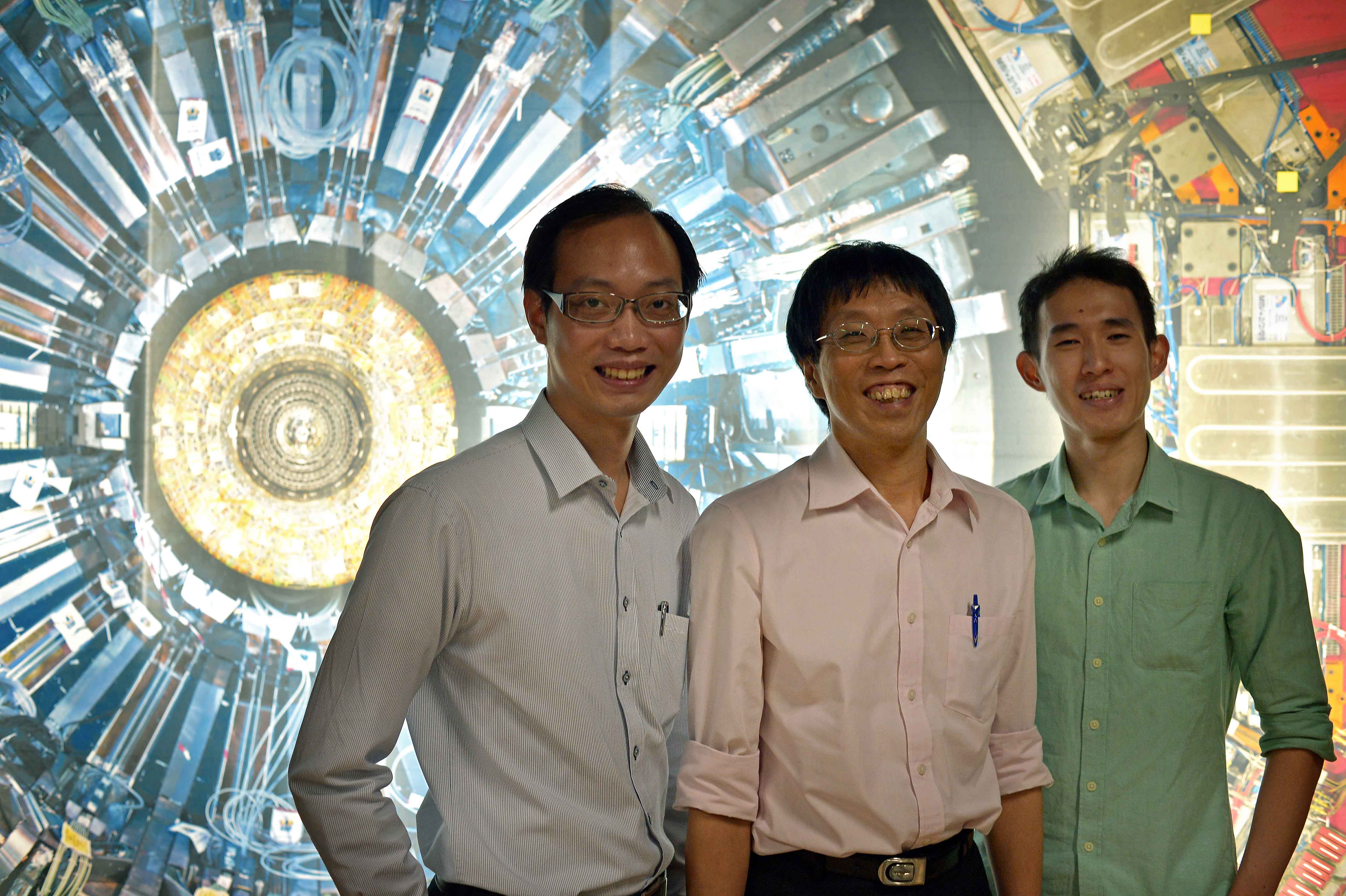'Breathing physics' at the atom smasher
Since 2010, NUS students have spent time at the Large Hadron Collider to work with a vibrant scientific community
Sign up now: Get ST's newsletters delivered to your inbox

Mr Leong Qixiang (left) and Mr Tan Hong Qi (right) have spent time at the Collider as part of a Cern programme, which is coordinated here by associate professor Phil Chan (centre).
ST PHOTO: KUA CHEE SIONG
Calvin Yang
Follow topic:
It is, perhaps, the most ambitious experiment in the world and involves a gigantic machine made up of a 27km ring tunnel fitted with superconducting magnets - which physicists use to learn more about what makes the universe tick.
But while the international community of physicist and engineers at the Large Hadron Collider facility in Switzerland work hard, they also play hard, said National University of Singapore (NUS) students who snagged stints at what is dubbed the world's greatest scientific experiment.
NUS, through a global programme started by European Organisation for Nuclear Research (Cern), which runs the Collider, has been sending two to three students there every year since 2010.
NUS tutor and PhD student Leong Qixiang, who did a two-month stint at the multi-billion dollar facility in 2011, said the community of physicists from more than 100 countries is vibrant.
The 30-year-old would spend entire Saturdays - from 11am till midnight - playing board games with other like-minded scientists. Besides regular movie nights on Wednesdays and occasional house parties, the scientists organise football league matches and table tennis competitions. They even form rock bands and hold a music festival every year.
But when it comes to work, "you live and breathe physics", said Mr Leong.
Students spend two months to a year at the Compact Muon Solenoid detector - one of four main detectors at the Collider, or at the offices of Cern. They collaborate with scientists on projects in areas which include computer programming and mathematical statistics. To prepare students for their stints, professors at NUS have them undergo modules and projects on particle physics, among other topics.
Associate Professor Phil Chan, a high-energy particle physicist at NUS who coordinates the programme here, said: "Their stints at Cern complement their studies, and they get to see first-hand how physics is done at a larger scale; involving thousands of physicists from different countries."
When NUS master's student Zhang Yuanyuan, who returned earlier this year after a two-month attachment, first saw the Collider, she was impressed. "I was amazed by the scale of it," the 22-year-old said. "It looked like an artwork."
Built 100m under the French-Swiss border, the Collider is the result of decades of planning and construction, involving 10,000 scientists and engineers from more than 100 countries.
First started up in 2008, it allows sub-atomic particles to be smashed together at nearly the speed of light. In 2012, scientists using the machine found the Higgs boson - a sub-atomic particle sometimes known as the "God particle".
PhD student Tan Hong Qi, 27, was then nearing the tail-end of his two-month stint. "The queue to the theatre for the announcement started the night before," he recalled.
"After the announcement, there were hugs and tears of joy. It was surreal being there and seeing the discovery for myself."

